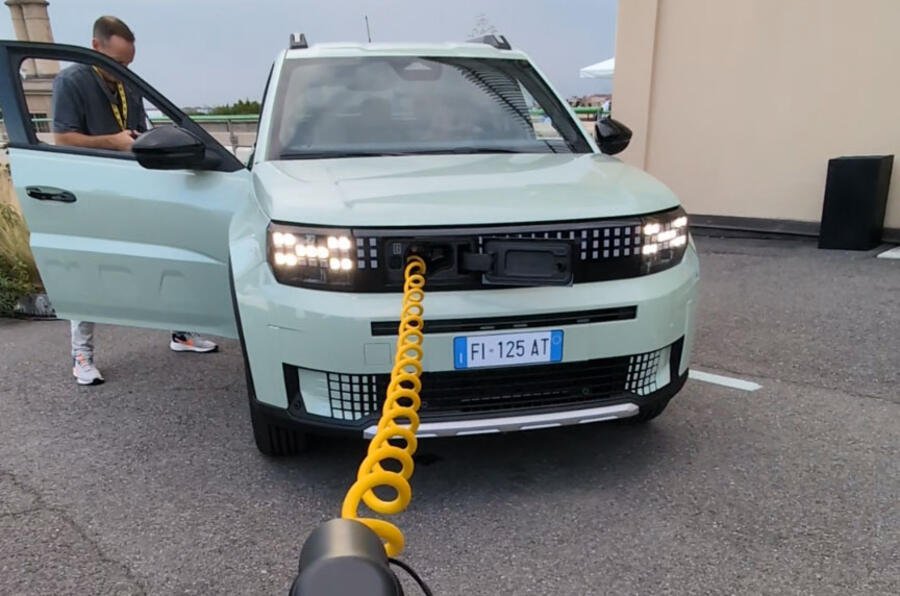This EV Has A Built-In Charging Cable. Here's Why That's Brilliant

If you think public charging can be annoying, know that it has its headaches in Europe too.
Charging an electric vehicle at a Level 2 public charger in Europe can be difficult because you have to go into the trunk, take out the cable, plug it into the car, and then into the charger. When you’re done, you do the same in reverse, and it’s just a bit of a hassle. The "take the plug with you" system is well-established in Europe, unlike in the U.S., where it's part of the charger itself.
That means you always have a charging cable that’s moving around and making noise in the trunk unless the EV has sufficient underfloor storage or optional elastic netting to keep it secure on the move.
Fiat engineers analyzed this issue and probably looked at one another with a perplexed gaze, wondering how nobody had come up with a solution.
They figured that it was incredibly simple to solve with inspiration from electrical appliances like vacuum cleaners: integrating the cable into the charging port to pull it out when needed and making it retractable so that you can quickly stow it away when not in use.
This is brilliantly simple, and it works for cars too, as demonstrated on the new Fiat Grande Panda EV, which has two separate charging ports. One is conventional and located on the rear left side of the vehicle, where you open a flap and slot in a CCS cable. The other features an extending cable with a Type 2 plug at the end that you pull out from behind a door in the faux grille.
This makes plugging into a Level 2 charger in Europe much easier, and it also keeps the cable from getting dirty since it doesn’t have to touch the ground. In EVs with a separate charging cable, it hangs down to the ground, so it gets dirty and you bring more dirt into the car every time you unplug it and put the cable back.
In the Fiat, you extend the cord only as much as you need to so that it doesn’t touch the ground, thus helping it stay clean for longer. Autocar says Fiat plans to integrate it into all its future electric offerings, starting with the Grande Panda EV, which has already been shown in production guise with a market debut planned for early 2025.
Fiat’s interpretation of the retracting charging cable idea is quite simple, and it doesn’t have a mechanism that pulls back the cable. The cable itself is a spiral, which allows it to extend and return to its original size, but if other manufacturers adopt this solution, they could put a more premium spin on it. They could have a regular cord wound around a reel that pulls the cable in like it does in your vacuum cleaner.
We’re curious to see if this Fiat solution inspires the rest of the automotive industry, and how other manufacturers would implement this idea—maybe other Stellantis brands could also follow suit. In the U.S., this could potentially even reduce charger vandalism, since thieves target the cords for precious metals. Or it could make home charging better somehow. There are some promising applications here.
Let us know in the comments if you think having a charging cable that retracts into the car’s front fascia is a useful idea.
